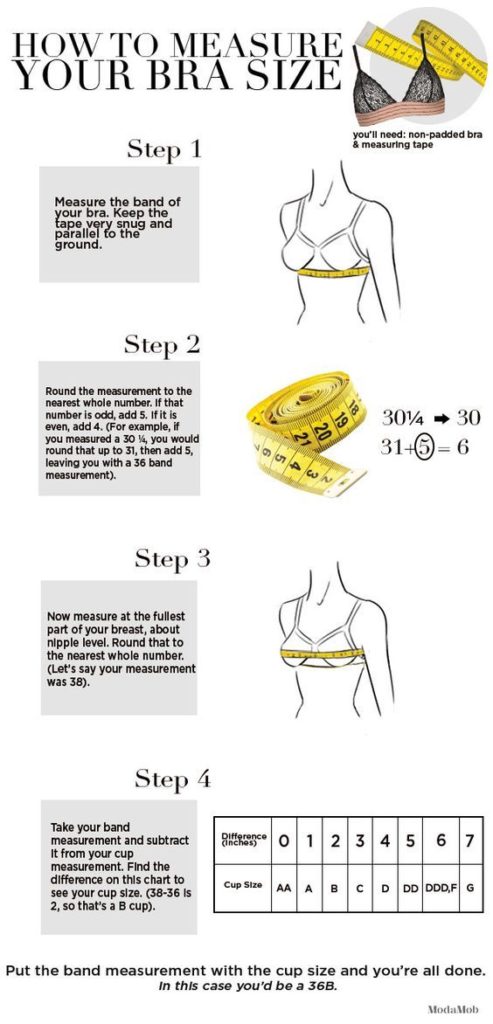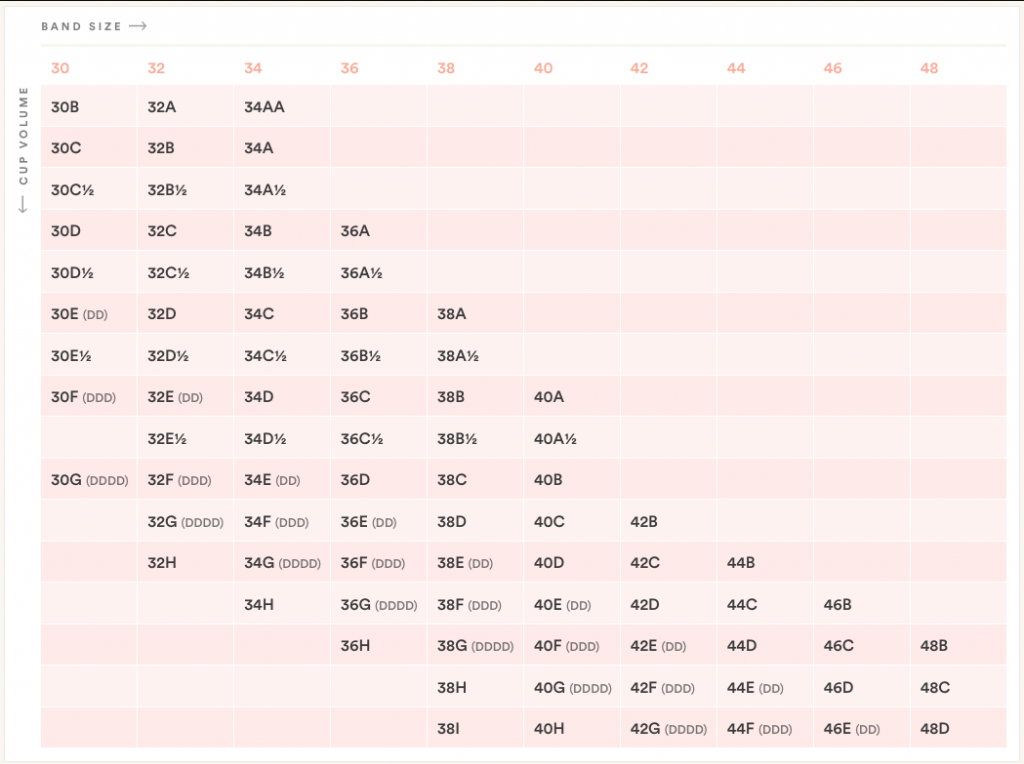This article first appeared in The Fibromyalgia Magazine, April 2018. Get the digital copy of the magazine from Pocketmags.
Wearing a bra is a literal pain for fibromyalgia warriors. Wearing an improperly fitting bra can cause additional discomfort. Here are some tips on how to minimize the pain of wearing a bra in part two of Fibromyalgia and Bras.
Bras Are a Pain
As we discovered in last month’s article, The REAL Pain of Wearing a Bra, wearing a bra can be a real pain and bras can cause lifelong issues when not worn correctly. These issues include breathing problems, unnecessary pressure on the shoulders, headaches, reduced arm function, limited range of motion, and more. There’s a fine line to walk when finding and wearing this undergarment. Not too big, but not too small. The straps have to be snug, but not too loose. No cup gap, but no spillage either. The list goes on.
This whole debacle leaves me feeling overwhelmed and at a loss on how to find a good bra. As it is now, I only buy a new bra every five to ten years to avoid the hassle. Finding a properly fitting bra is like deciding where to start cleaning after coming out of a week-long flare – where do you even begin? Let’s start with how to find the proper size.

How to find your bra size
Find the correct band size
To find the correct band size for you, stand straight and measure around the rib cage directly under your breasts using a measuring tape. The measuring tape should be level all the way around and snug. Round to the nearest whole number. If the number is even, add four to that number. If it’s an odd number, add five. This is your band size.
For example, the measurement around my rib cage is 32 inches. By adding a four because it’s an even number, I get my band size of 36. This is interesting because my current band size is 38. So far, I’m wearing a bra too big for me.
Find the correct cup size
To find the correct cup size, you need to be wearing a bra. Measure around the fullest part of your bust across the nipples using a measuring tape. Again, the measuring tape should not dip down around the back. Subtract your band size from the number you get. The result is your cup size based on this sizing guide from Good Housekeeping:
0 = AA, 1 = A, 2 = B, 3 = C, 4 = D, 5 = DD, 6 = DDD/F, 7 = G
For example, my measurement around the fullest of my bust is 40 inches. If I take 40 (bust size) and subtract 36 (band size), the result is four. This means I should be wearing a DD cup size. My current bra is a 38DD, but I still have a cup gap.
A cup gap sometimes exists near the top of the bra cup when the bra you’re wearing is too big for you. If you don’t know about this gap, good for you! That means you don’t have it. (But then again you could have spillage instead of the gap…that’s not good either. Spillage means you have a bra that is too small for you.) What to do about a cup gap? This is where sister sizes come into the picture.

Bra Sister Sizes
A few months ago, after I discovered the cup gap, I was told about sister sizes. Apparently, it’s an unknown secret in the world of women’s bras. I don’t even know my true bra size and now you’re telling me there is something called sister sizes? Sister sizes are the sizes to use if you can’t seem to get that perfect fit from your correct bra size.
To find a sister size, go down in the band size, then increase the cup size, or go up in the band size, and go down in the cup size. I’ll use my bra size as an example. My correct bra size is 36DD. However, my current bra is a DD and I have a cup gap. This would mean I need a smaller cup, but I cannot go down in the cup without adjusting the band size. Therefore, the best sister size in my case would be a 38D. If my cup size were too small, causing the aforementioned spillage, I would want to go with a 34E sister size.
How to wear an underwire bra
Underwire bras give extra support to those needing them. The thin piece of metal running under the cup and up the sides of the breasts pushes the breasts up and into the center of the chest. In addition to giving better support, an underwire gives your bosom a more natural round shape. When fitting for an underwire bra, be sure it lays flat against the breast bone. It should neither press against your chest forcing your breasts down, nor rub against your breasts.

When to wear a sports bra
In the article The REAL Pain of Wearing a Bra, sports bras were mentioned under the consequences of an ill-fitting bra. Sports bras can cause breathing issues if not worn correctly or when worn for regular, prolonged periods of time. However, they aren’t a bad thing. When worn correctly for the appropriate occasion, a sports bra can give adequate support and correctly minimize movement of your breasts, causing less harm to your chest and resulting in less pain in that area.
A sports bra is a necessity when doing exercises such as running, yoga, or lifting weights. Which exercise you are doing determines which type of sports bra to choose. For example, running requires high support, high impact sports bra, while walking requires low support, low impact sports bra.
Are bralettes okay to wear?
I hadn’t heard of bralettes until I began doing research on this topic. Apparently, the bralette isn’t a new style since it first appeared as a bra in the 1920s and ‘30s. A bralette is a bra in its basic form. They have no underwire or padding making them comfortable and casual for most wearers. Another pro of the bralette over a traditional bra is the endless styles, shapes, and designs. They are available in sizes 32 to 40, and cup sizes of A and beyond.
As far as when to wear a bralette, it’s entirely up to you and your preference. Most women choose to wear a bralette when keeping it casual, such as visiting friends or running errands.
Try it before you buy it!
Finding the correct bra size is only half the battle. Once you have found your bra size, now is the time to make sure it fits properly. This part should be done while you’re bra shopping. Don’t purchase a bra based solely on the size only to get home and find it’s still a poor-fitting bra despite being the correct size.
When trying on a bra, be sure to put it on correctly before deciding to keep it or toss it. To properly don it, bend at the waist and have your breasts naturally fall into the cups. The bra should be hooked on the first hook of the band (this is the loosest setting). When looking at yourself sideways in the mirror while wearing the bra, your breasts should fall midway between your shoulders and elbows. One finger should be able to slip under the strap so that it’s snug, but not too tight.
Lastly, ensure there is no cup gap or spillage. If there is a cup gap, the bra cup is too small and a sister size should be tried. If there is a spillage, the cup is too small. Again, try a sister size.
Additional tips to ensure a proper fit
Here are a few last guidelines to ensure a proper fit.
- When putting on a bra, bend at the waist and have your breasts fall into the cups.
- The band should be at the same level in the back as it is in the front.
- Over time, the elasticity of the band will loosen. This will require you to use the middle hook. Once the last hook (tightest setting) is being used, it’s time to purchase a new bra.
- The wider the strap, the better. Having distributed support on the shoulders is essential for a healthy fit. Look for a wide, soft strap.
- Adjust your straps periodically. Straps loosen over time and should be adjusted to maintain the proper support.
- Launder correctly. Washing your bra on a delicate cycle and hanging to dry will help keep its shape and prolong its life of the bra.
Take the time to find a properly fitting bra, even if it’s once a decade like me. The long-term effects of an ill-fitting undergarment can cause permanent damage to your shoulders, neck, and chest. This can aggravate the physical symptoms of fibromyalgia and wreak havoc on your body. To find your fit in just a few minutes, be sure to visit the bra fitter, Third Love at www.ThirdLove.com.
